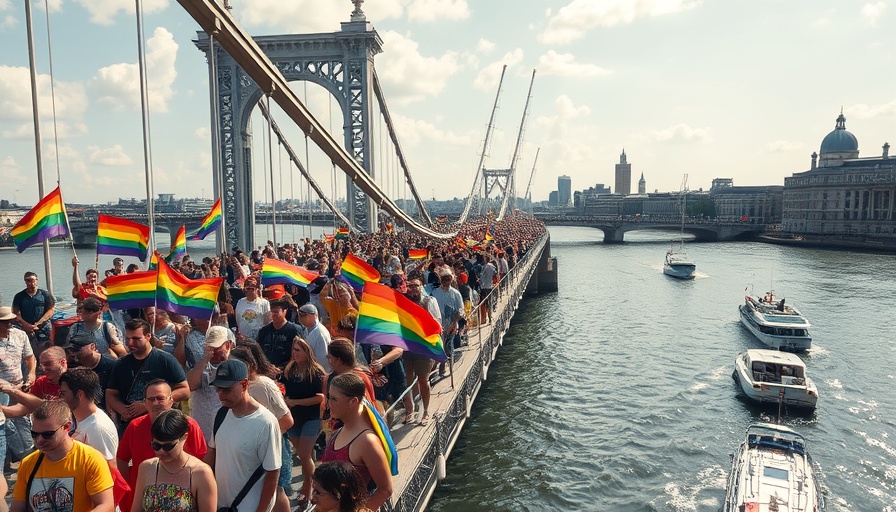
A Proud Display: The Rise of Budapest’s Pride Parade
Despite aggressive attempts by Prime Minister Viktor Orban’s government to stifle it, the Budapest Pride Parade blossomed into an unprecedented gathering as over 100,000 participants marched through the city, protesting against both the ban and the sweeping anti-LGBTQ legislation recently enacted by Orban’s party. What was shaped as a low-key event turned into a vibrant display of resistance and unity, showcasing the community’s resilience against governmental constraints.
Understanding the Context: Why the Ban?
In recent years, Hungary has seen a significant tightening of laws regarding LGBTQ rights, aligned with Orban’s increasingly populist and nationalistic policies. The ban on the Pride parade, justified by the government as a move to protect children from ‘homosexual propaganda’, was viewed by many as an opportunistic ploy. This ban, rather than deterring participants, galvanized them, transforming what was typically a smaller gathering of activists into a mass protest against Orban’s regime.
Voices from the March: Personal Stories
Participants shared their stories as they marched. Edit Rocza, a special-education teacher, expressed her anger not just at the ban but at the government’s tactics for diverting attention from serious socio-economic issues afflicting Hungary. Many felt that the government’s rhetoric illustrated a gross misunderstanding and disregard for their rights and identities. This sentiment resonated across a diverse crowd made up of allies and advocates alike willing to risk legal repercussions to show their solidarity.
Cultural Implications: LGBTQ Rights in Hungary
The significance of this year’s Pride event transcends mere celebration; it symbolizes a cultural pushback against a regime that seeks to marginalize diverse identities. As cities like Budapest rally, they become part of a broader European dialogue regarding LGBTQ rights. The celebration, amidst legal threats and a hostile environment, raises essential questions about freedom of assembly, expression, and the rights inherent to all citizens regardless of their sexual orientation.
Political Underpinnings: What's Next for Hungary's Opposition?
This year's parade also created an avenue for discussing political implications and the rising opposition led by Peter Magyar. As Fidesz, Orban’s party, grapples with insurgent popularity among progressive circles, the dynamics of the Pride Parade illuminate not only cultural resistance but also political strategy and discourse within the country. Magyar’s approach to issues concerning LGBTQ communities could be a litmus test for his stance on broader civil rights and could chart a new political trajectory for Hungary.
A Broader European Perspective
Orban’s crackdown on LGBTQ rights has not gone unnoticed globally, marking Hungary as a focal point in debates over democracy and human rights in Europe. Other nations watching closely may take cues from this latest demonstration of solidarity and bravery amid repression. The implications extend beyond Hungary, sparking conversations about how far populist politics can reach into the lives of individuals and communities across continental Europe.
Reflection: The Power of Unity
The overwhelming turnout demonstrated during the parade underscores one significant truth: when communities face repression, they often respond with strength, solidarity, and pride. This turnout hints at a possible shift in political currents in Hungary as more citizens rally for inclusion and advocacy. The Pride Parade becomes not only a celebration of identity and diversity but embodies the struggle for rights and recognition in the face of systematic erosion by those in power.
For residents of Budapest and beyond, it serves as a beacon of hope that resistance against oppression is not only possible but powerful, and that the collective voice can not only demand rights but also change hearts and minds.
 Add Row
Add Row  Add
Add 




 Add Row
Add Row  Add
Add 

Write A Comment